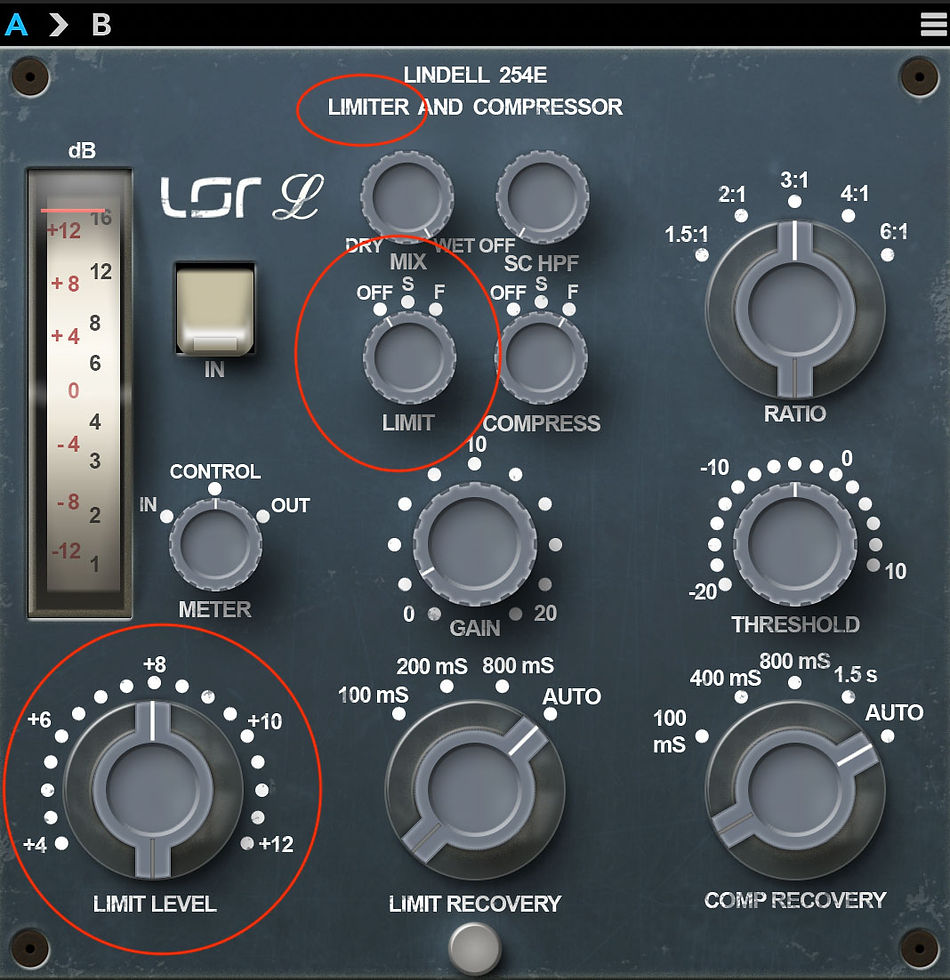
Compression & Limiting.
- LexXxus

- Jun 30
- 3 min read
Hey Dj!
I recently had a student ask about limiting and compression. . .
Here's a news-style article tailored for an EDM producer and sound engineer, focusing on the importance and application of audio compression and limiting:
Title: Shaping the Drop: How Audio Compression and Limiting Are Defining the Sound of Modern EDM
July 1, 2025 | By LexXxus
In the ever-evolving world of electronic dance music (EDM), producers and sound engineers are pushing boundaries not only with synthesis and rhythm but also with how loud, clean, and dynamic a track can sound. At the heart of this sonic arms race lie two often-overlooked heroes: audio compression and limiting.
For EDM producers, these tools are no longer optional—they are essential for achieving the massive, polished, and club-ready sound that listeners expect on streaming platforms and festival stages.
Dynamic Control in a Dynamic Genre
Compression, at its core, reduces the dynamic range of audio—making the quiet parts louder and the loud parts more controlled. In a genre known for sudden drops, hard-hitting kicks, and intricate basslines, compression ensures that no sonic element dominates at the expense of clarity.
“Without compression, EDM can sound flat or even chaotic,” says DJ and mastering engineer Alex Vega, whose credits include top Beatport chart-toppers. “You want to feel the kick, but not at the expense of the vocal. Compression lets you carve space for each element.”
Sidechain compression—a technique where one signal (usually the kick) triggers compression on another (like the bass)—has become a signature sound in EDM. That characteristic “pumping” effect not only adds groove but also allows each element to breathe in the mix.
The Loudness War, Reimagined
As streaming platforms normalize playback volumes, the practice of loudness maximization has evolved. Limiting, a more aggressive form of compression, is used at the mastering stage to prevent digital clipping and push the overall volume to its limits.
“In the past, we were smashing tracks through limiters to compete,” says mastering engineer Lana Rue, who specializes in electronic music. “But now, it's more about clean loudness. You want your track to hit hard without sacrificing punch or causing listener fatigue.”
Modern limiters, especially those powered by AI and multiband processing, allow engineers to fine-tune the loudness of specific frequency ranges. For instance, taming low-end transients while preserving the air and sparkle in the highs—a crucial balance in big room, trance, and future bass.
The Producer’s Dilemma: Energy vs. Transparency
Every decision in compression and limiting comes down to intention. Over-compress, and you risk dulling your mix. Under-compress, and the track might sound weak on large systems.
“The trick is knowing your genre and listening environment,” says Vega. “A techno track might thrive on subtle glue compression, while a trap anthem might need surgical limiting to control sub-bass energy.”
Producers are encouraged to mix with dynamics in mind early in the session. Rather than relying solely on mastering to fix volume and balance, many now use serial compression—gentle compression applied in stages across different plugins and buses.
Looking Ahead
With the rise of Dolby Atmos and spatial audio, dynamics are becoming more important than ever. EDM in immersive formats demands both width and depth, making tasteful compression even more critical.
Whether you're crafting a hands-in-the-air festival banger or a chill downtempo groove, understanding compression and limiting is vital to making your tracks compete on a global stage. For today’s EDM producers and engineers, these aren’t just tools—they’re part of the creative process.
MixXx Well!
LexXxus.
About the Author:
This article was produced by LexXxus, dedicated to covering the intersection of technology, production, and sonic innovation in the music industry.




Comments